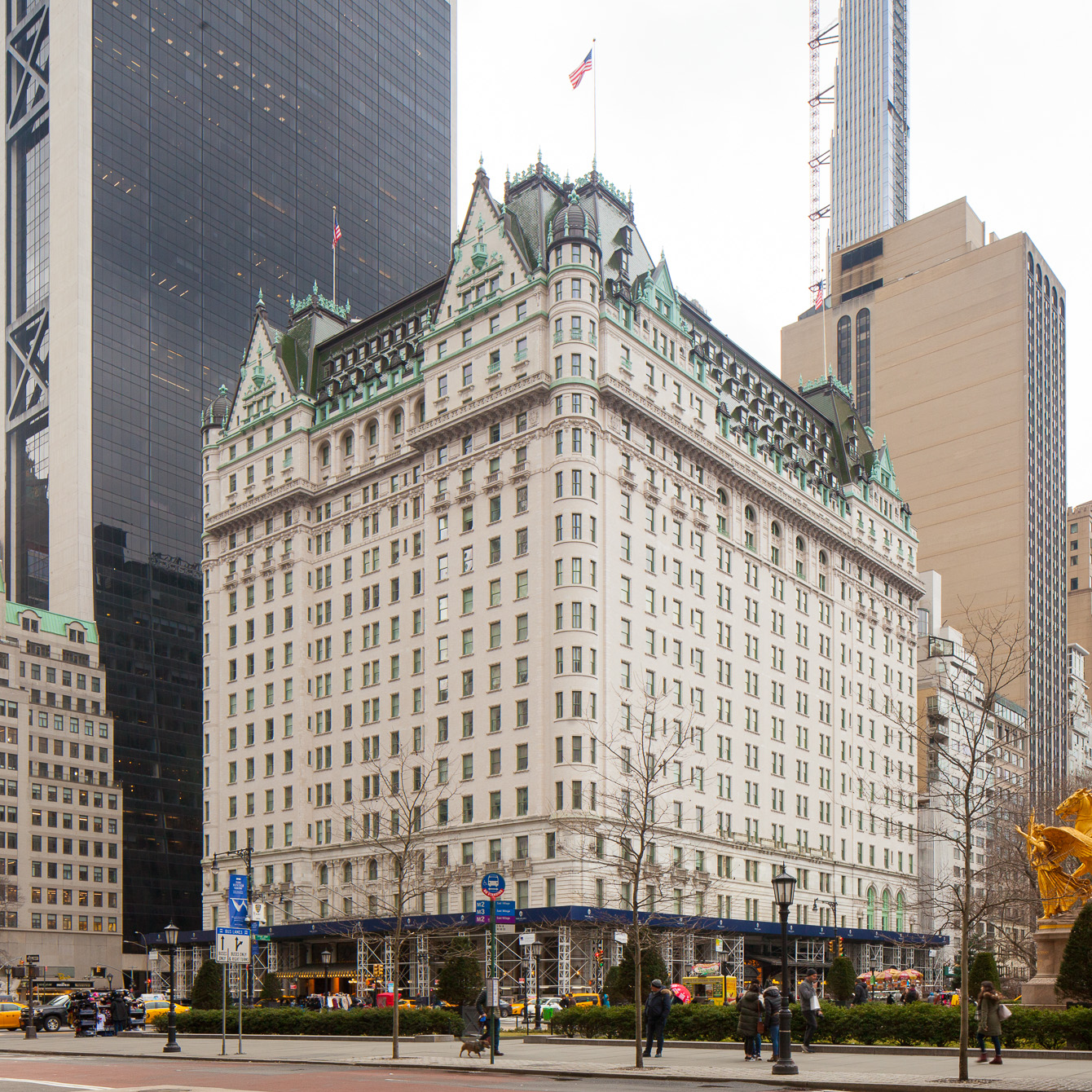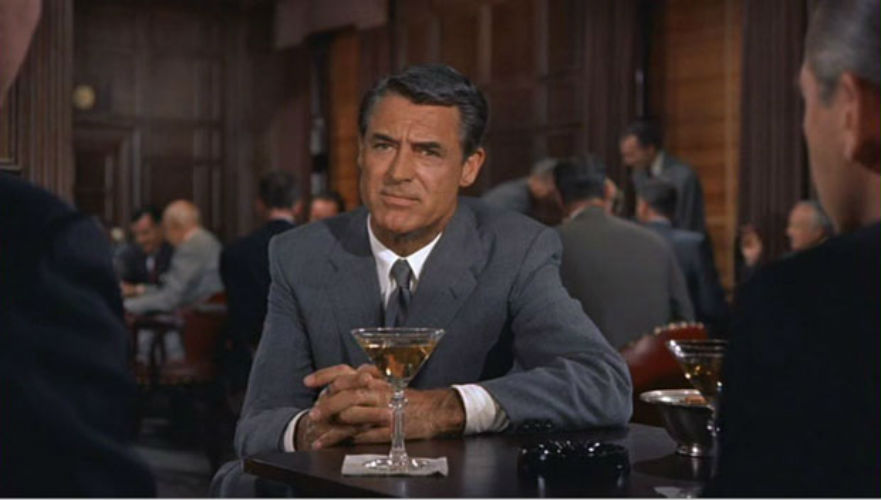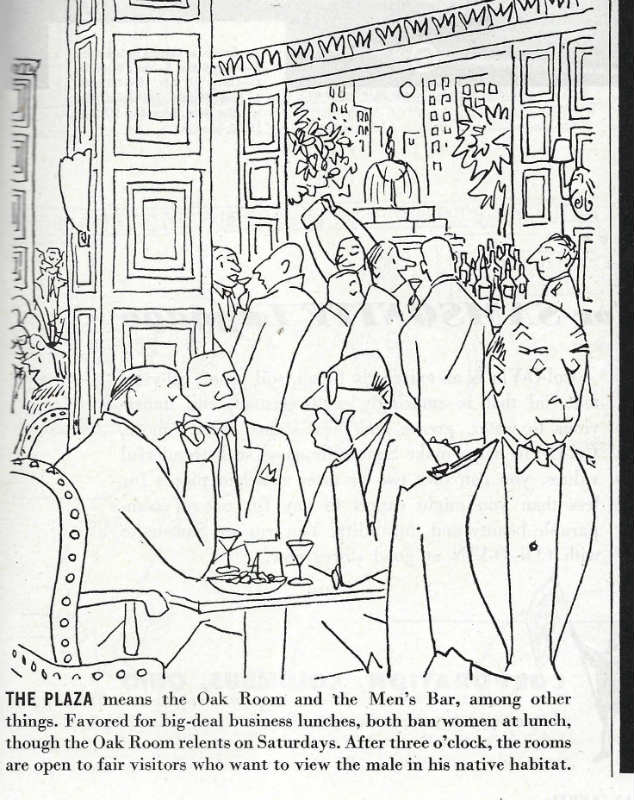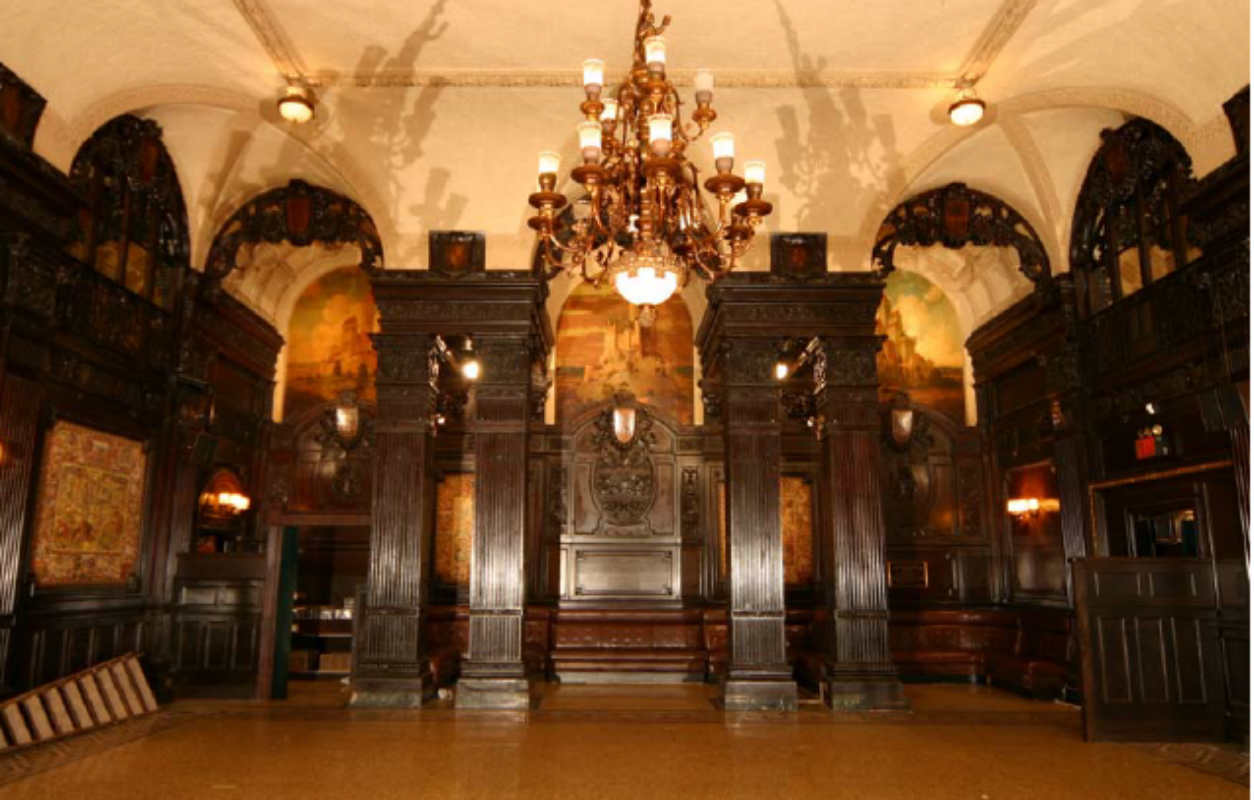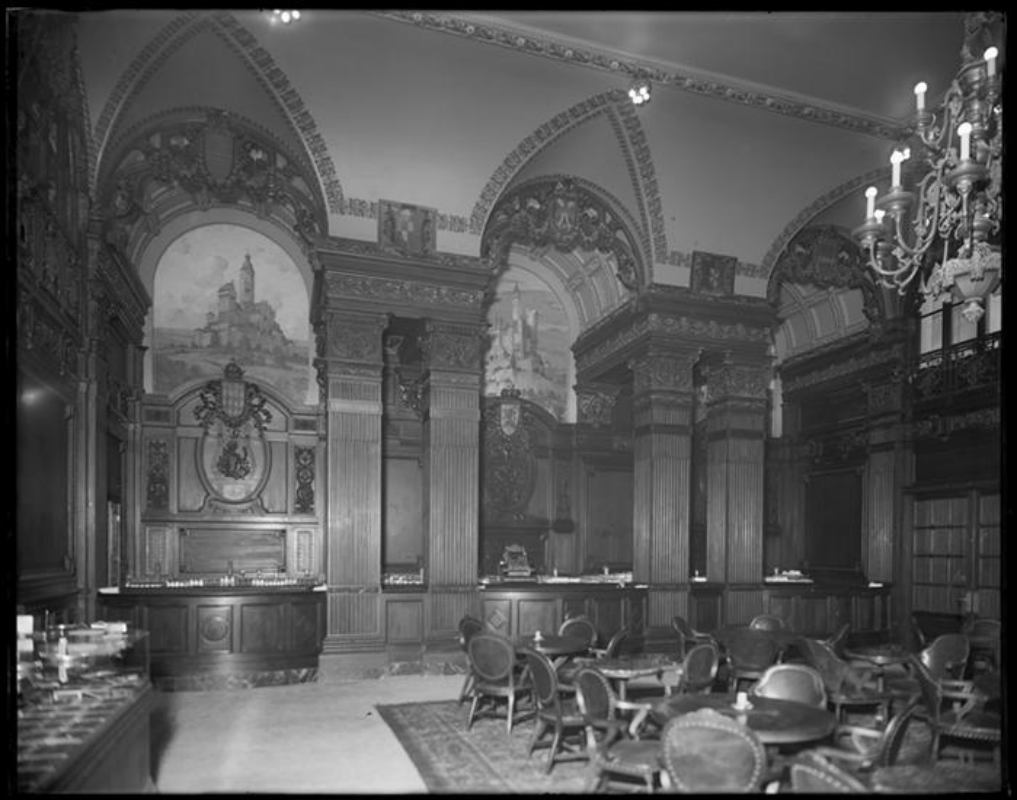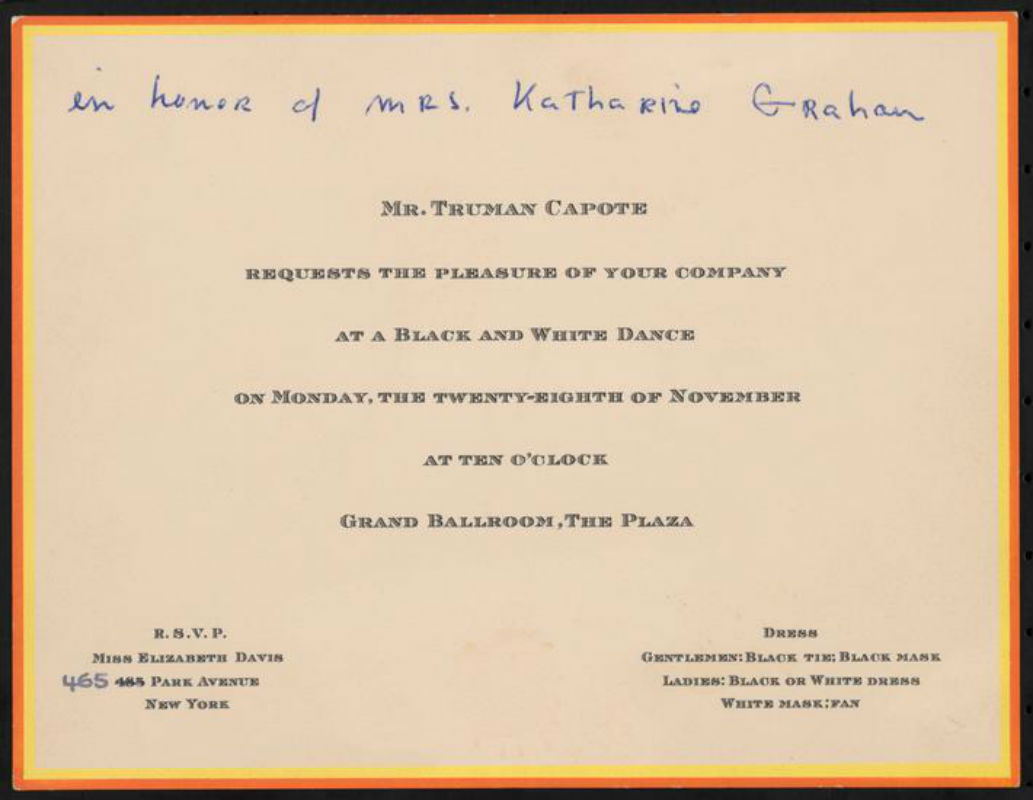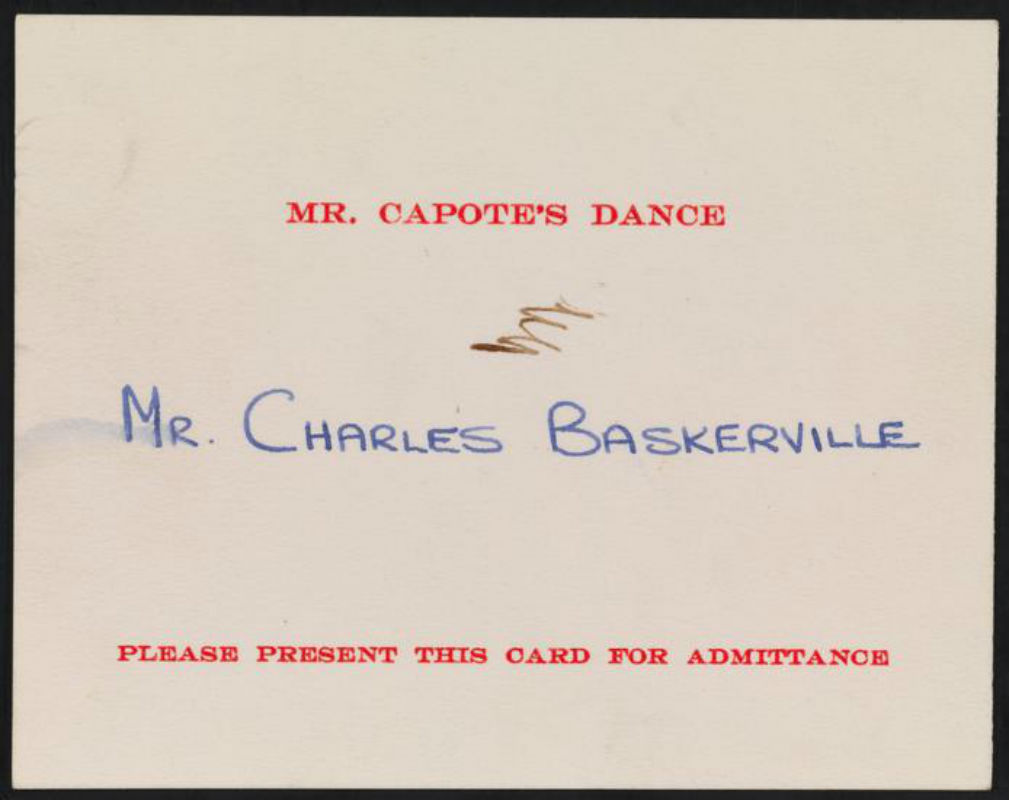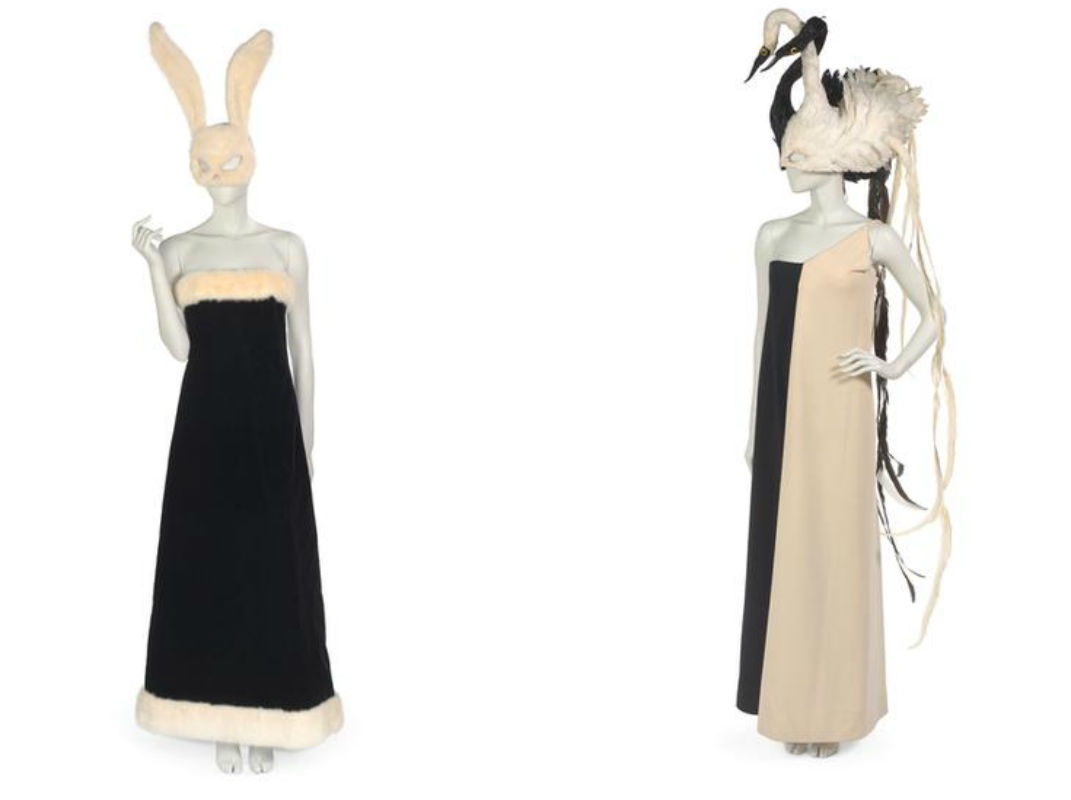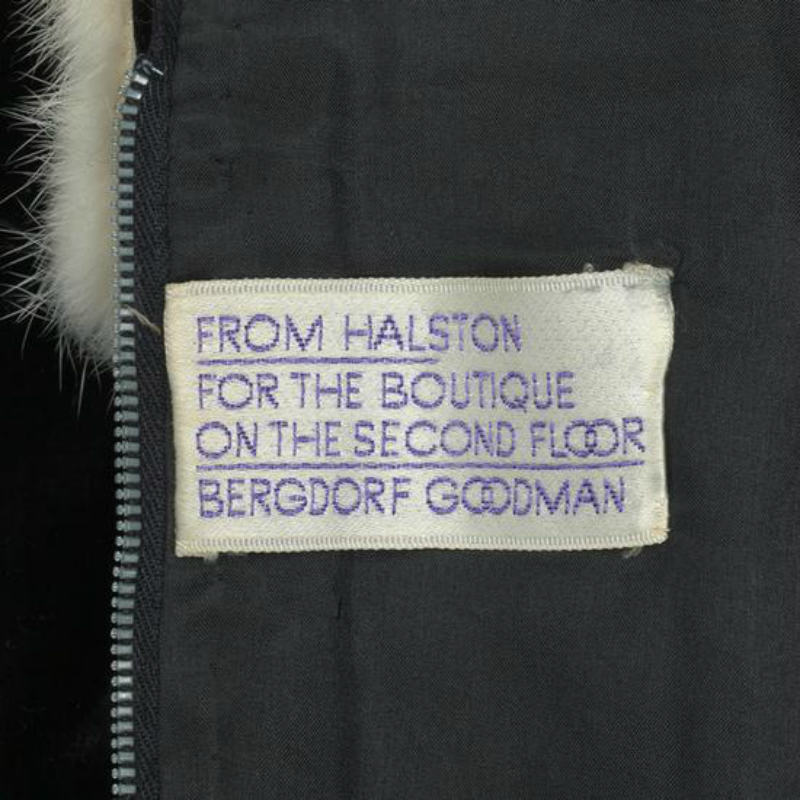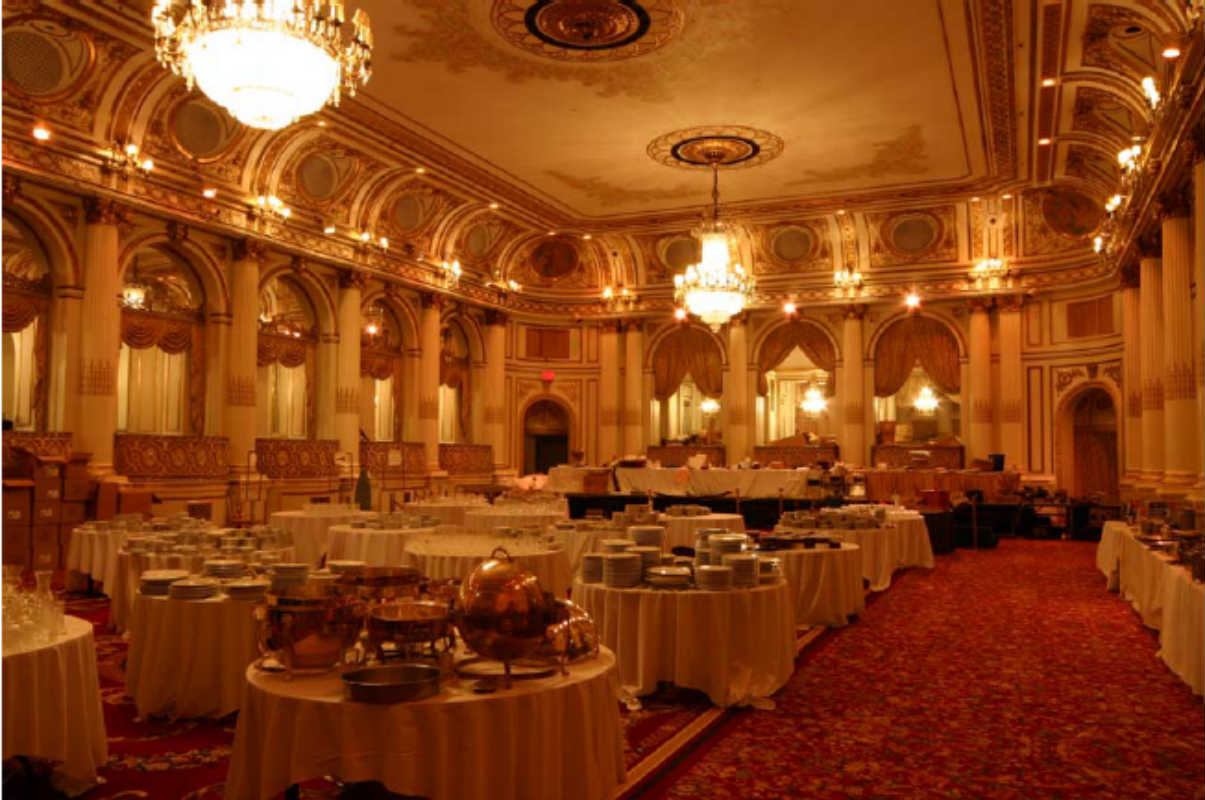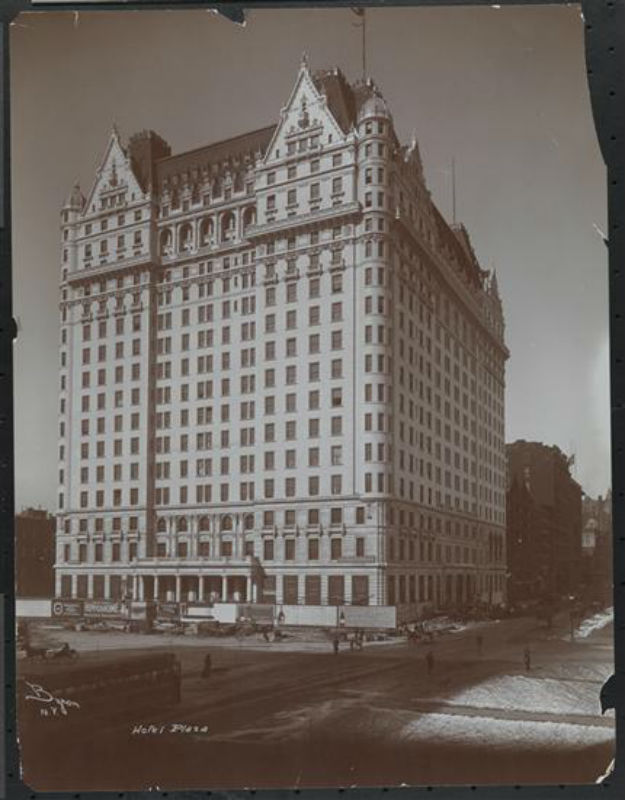overview
The Oak Room in the famed Plaza Hotel off Central Park was a discreet meeting place for gay businessmen in the early 20th century.
In 1966, the Grand Ballroom played host to gay author Truman Capote’s Black and White Ball, which is widely regarded as one of the defining social events of the 1960s.
History
In the early 20th century, several upscale New York City hotels, such as the Plaza and the Astor (demolished), operated highly respectable bars for businessmen. With their mix of gay and straight male clientele, these social spaces allowed white-collar gay men to meet each other discreetly and also provided an alternative to gay bars that could be subjected to police raids. The Plaza’s sophisticated Oak Room — originally known as the Men’s Bar or Bar Room and, when Prohibition began in 1920, the Café or Lounge — opened in 1907 and was a well-known rendezvous for gay men. According to historian George Chauncey in his book Gay New York, “men were expected to dress well and carry themselves with great discretion.” Chauncey has also noted that men would wear a red tie as a coded message that they were gay. In Alfred Hitchcock’s North by Northwest (1959), star Cary Grant appears in a scene in the Oak Room. Today, the room remains among the best preserved public spaces at the Plaza.
Author Truman Capote regularly lunched at the Plaza with friends. In the Grand Ballroom, he gave his famous Black and White Ball on November 28, 1966, widely regarded as one of the defining social events of the 1960s. Given in honor of Washington Post publisher Katharine Graham and in celebration of Capote’s completion of In Cold Blood, the ball brought together a mix of leaders in the arts; Hollywood, Broadway, New York, Washington, and European society; and some of the Kansans about whom Capote had been interviewing and writing.
I wanted it at The Plaza because I think [the Grand Ballroom is] the only really beautiful ballroom left in the United States.
Guests included choreographer Jerome Robbins, photographers Cecil Beaton and Richard Avedon, actresses Tallulah Bankhead and Claudette Colbert, fashion designer Halston (who also designed a dress for Candice Bergen), director Vincente Minnelli, author James Baldwin, painter Paul Cadmus, museum curators Henry Geldzahler and Monroe Wheeler, composer Virgil Thomson, New Yorker columnist Janet Flanner and her lover, publisher Natalia Danesi Murray, author Glenway Wescott, editor and writer Leo Lerman, and Capote’s lover, novelist Jack Dunphy. Bill Cunningham, who would later become known as a street photographer but was then a milliner, created a “Double Swan” headdress for an attendee.
Another gay legend, Liberace, also had a special affinity with the Plaza, having played the Persian Room, early in his career in 1940 as an intermission pianist, and returning to the room seven years later with his over-sized piano and candelabra.
Entry by Amanda Davis, project manager (March 2018).
NOTE: Names above in bold indicate LGBT people.
Building Information
- Architect or Builder: Henry J. Hardenbergh (Warren & Wetmore; Schultze & Weaver)
- Year Built: 1905-07 (1919-22; 1929)
Sources
Charlotte Curtis, “Capote’s Black and White Ball: ‘The Most Exquisite of Spectator Sports,’” The New York Times, November 29, 1966, 53.
Gale Harris, LGBT Research File, New York City Landmarks Preservation Commission, 2014.
George Chauncey, Gay New York: Gender, Urban Culture, and the Making of the Gay Male World, 1890-1940 (New York: Basic Books, 1994), 349-350.
Michael Caratzas, Gale Harris, Virginia Kurshan, Matthew A. Postal, Donald Presa, and Jay Shockley, Plaza Hotel Interior Designation Report (New York: Landmarks Preservation Commission, 2005).
Do you have more information about this site?
This project is enriched by your participation! Do you have your own images of this site? Or a story to share? Would you like to suggest a different historic site?
